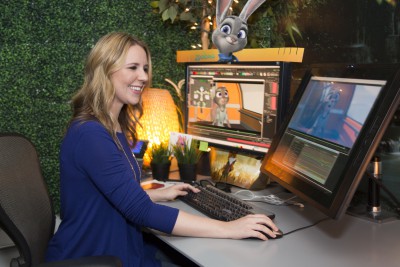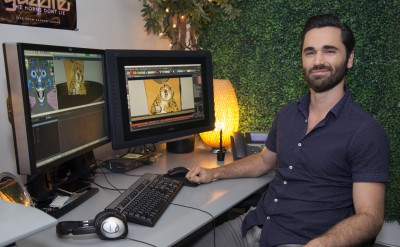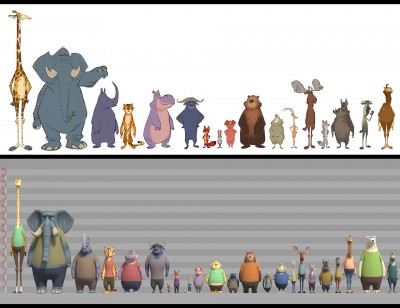Zootopia Calling Part 3: Animating Zootopia
 As we get closer to the release of Disney's Zootopia, it's time for the final installment of "Zootopia Calling" (be sure to check out Part 1 and Part 2 to get the whole story). In the film, animals live in a human-esque world devoid of any homo sapiens. This time around, we will focus on the animators and creative talent that have brought these characters to life.
As we get closer to the release of Disney's Zootopia, it's time for the final installment of "Zootopia Calling" (be sure to check out Part 1 and Part 2 to get the whole story). In the film, animals live in a human-esque world devoid of any homo sapiens. This time around, we will focus on the animators and creative talent that have brought these characters to life.

The film's protagonist is Judy Hopps, an optimistic bunny voiced by Ginnifer Goodwin. Her character is forced to pair up with pessimistic Nick Wilde, a sly fox voiced by Jason Bateman. Because their chemistry is such an important part of this film, the actors were scheduled for several simultaneous recording sessions. Kira Lehtomaki was an animation supervisor for Judy Hopps who highlighted the challenges of imbedding both animal and human qualities into the characters. For an example, the showcased some reference footage of a real rabbit responding to a surprising situation and then showed how they put that same type of reaction into Judy.

One of the qualities of Zootopia that really excites me is the amazing supporting cast of hilarious characters. You've already met the unforgettable Flash, one of the sloths who works at the DMV, but Nathan Engelhardt revealed Clawhauser, a cheetah with a desk job. As a result of his sedentary living style and proclivity for donuts, Clawhauser has put on a little weight. But being a cheetah, he still runs with his head far out. The end result is a hilarious visual gag that will leave you with stitches in your side.

The scale of the characters was a big challenge for many reasons. The team wanted to keep the size difference between a mouse and a giraffe the same as they are in real life, but this created challenges for camera height. As a point of reference, they decided that since Nick and Judy are the main characters, they would be treated as they would be the standard. For clothes in Zootopia, fabrics and stitching become more like a tent on larger animals like elephants, while they become more doll-like on smaller critters like lemmings. To create the background characters, the look department was able to make 400 unique species of animals and generated enough costumes to create a cast of 800,000 extras.
 It's challenging to create convincing animation, but without a believable world for them to inhabit the film would fall apart. Environment Look Supervisor Lance Summers shared that since the city is as much a character in the story as Judy Hopps or Nick Wilde, they created the concept of "Keep alive" to keep it moving. The city will never be static, leaves in trees will always be rustling in the breeze, fur on characters will always be flowing. To make this possible, each tree in the film had to have the correct amount of leaves to look realistic and each character had to be covered in millions of individual hair strands. It's an effect that has been faked in the past, but Zootopia is the first time this has been truly accomplished.
It's challenging to create convincing animation, but without a believable world for them to inhabit the film would fall apart. Environment Look Supervisor Lance Summers shared that since the city is as much a character in the story as Judy Hopps or Nick Wilde, they created the concept of "Keep alive" to keep it moving. The city will never be static, leaves in trees will always be rustling in the breeze, fur on characters will always be flowing. To make this possible, each tree in the film had to have the correct amount of leaves to look realistic and each character had to be covered in millions of individual hair strands. It's an effect that has been faked in the past, but Zootopia is the first time this has been truly accomplished.
Zootopia hits theaters on March 4th, a hilarious family film just in time for spring. With everything I've seen so far, I'm convinced that it's going to be the funniest Disney animated film so far. And while Disney's other 2016 animated film Moana looks breathtaking, I'm more excited for Zootopia.


